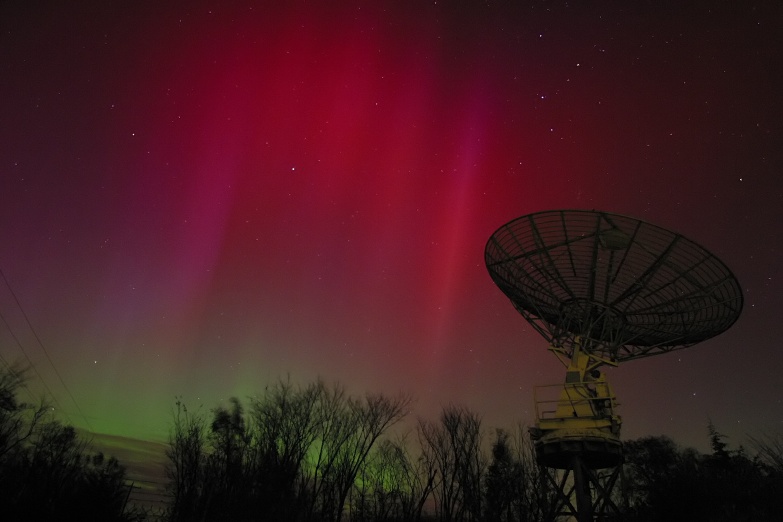Aurora Borealis
|

|
|
Unlike the other objects featured in this calendar, the aurora borealis or
northern lights is actually an atmospheric phenomenon, but with a decidedly
astronomical origin. We usually associate the northern lights with mnore
northerly locations, but during times of intense solar activity this
phenomenon can be seen in more southerly locations. This picture of the
northern lights was taken at the Fick observatory on October 29, 2003. The
dish in the foreground is a radio telescope at the observatory.
A day earlier (see September's image) the Sun had released a storm of
energetic protons and electrons into space, some of which interacted with
Earth's magnetosphere. The colliding particles cause the oxygen atoms and
nitrogen molecules in the upper atmosphere to glow. What makes northern
lights (aurora borealis) wonderful to obseve is their variety. One can see
anything ranging from pulsing green blobs, to spectacular red and green rays.
|
|
